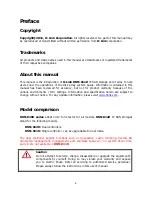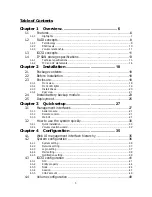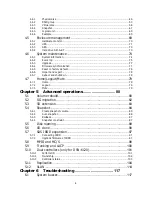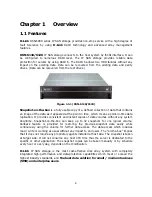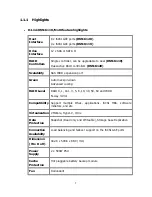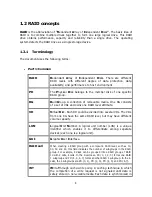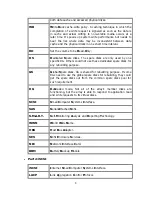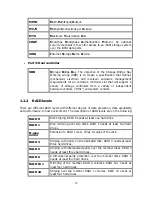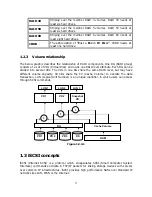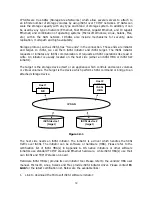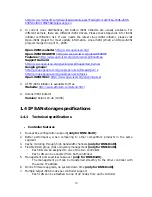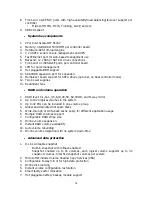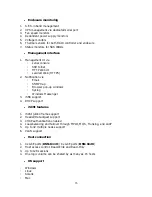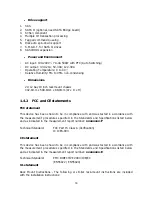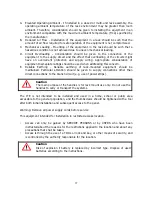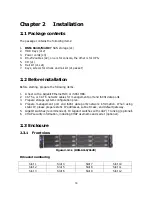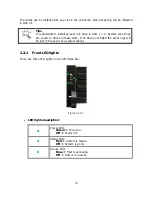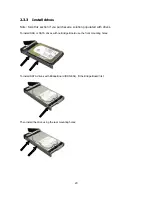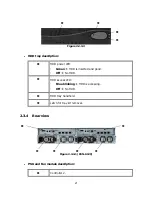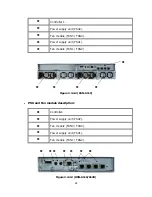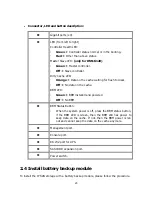
8
1.2
RAID concepts
RAID is the abbreviation of “Redundant Array of Independent Disks”. The basic idea of
RAID is to combine multiple drives together to form one large logical drive. This RAID
drive obtains performance, capacity and reliability than a single drive. The operating
system detects the RAID drive as a single storage device.
1.2.1
Terminology
The document uses the following terms:
Part 1: Common
RAID Redundant Array of Independent Disks. There are different
RAID levels with different degree of data protection, data
availability, and performance to host environment.
PD
The Physical Disk belongs to the member disk of one specific
RAID group.
RG Raid Group. A collection of removable media. One RG consists
of a set of VDs and owns one RAID level attribute.
VD Virtual Disk. Each RD could be divided into several VDs. The VDs
from one RG have the same RAID level, but may have different
volume capacity.
LUN Logical Unit Number. A logical unit number (LUN) is a unique
identifier which enables it to differentiate among separate
devices (each one is a logical unit).
GUI Graphic User Interface.
RAID cell
When creating a RAID group with a compound RAID level, such as 10,
30, 50 and 60, this field indicates the number of subgroups in the RAID
group. For example, 8 disks can be grouped into a RAID group of RAID
10 with 2 cells, 4 cells. In the 2-cell case, PD {0, 1, 2, 3} forms one RAID
1 subgroup and PD {4, 5, 6, 7} forms another RAID 1 subgroup. In the 4-
cells, the 4 subgroups are PD {0, 1}, PD {2, 3}, PD {4, 5} and PD {6,7}.
WT Write-Through cache-write policy. A caching technique in which
the completion of a write request is not signaled until data is
safely stored in non-volatile media. Each data is synchronized in


